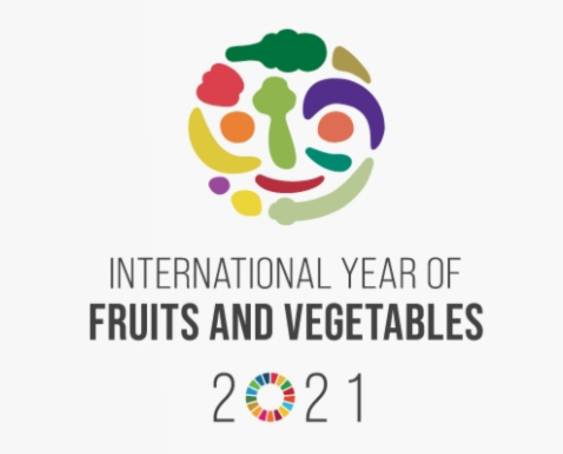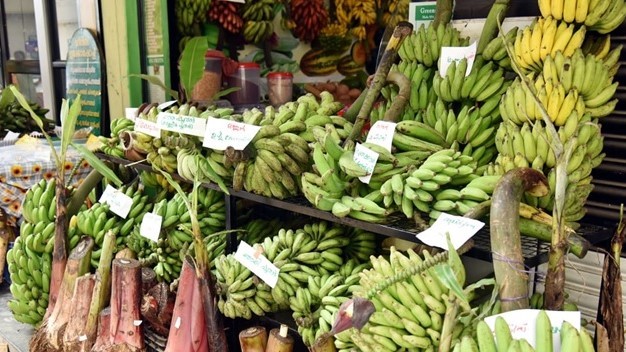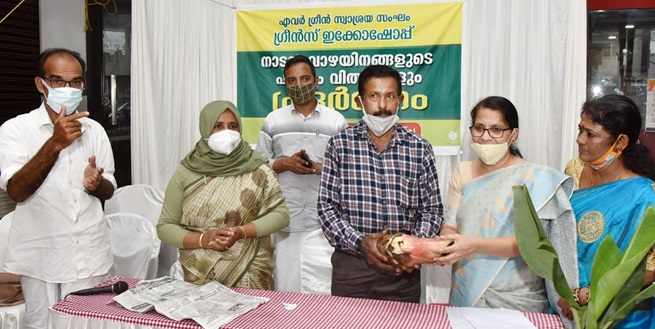N. Anil Kumar

Banana (including plantain) is the world’s second topmost fruit in terms of production (116.78 metric ton in 2019) after tomato (technically it’s a fruit) followed by Watermelon (100.41 Mt) and Apples (87.24 Mt). In many low-income, food-deficit countries, banana is a saviour crop both as a staple and cash harvest. This is the most affordable fruit for the millions of poor in the world from countries such as India, Myanmar, Thailand, Sri Lanka, Nepal, Philippines, Indonesia, Brazil, China, New Guinea and many African countries. The first and foremost health contribution from a ripened sweet banana is potassium- an essential element to prevent stroke, high blood pressure, and heart disease, besides that the fruit being a great source of flavonoids, pectin, magnesium, manganese, fibre and vitamins B6 and C.

Being a vegetative crop (propagation is from suckers), Bananas are easily raised in home gardens mostly by women and used for multi-purposes- as fruit, flour, vegetable, medicine (pseudo-stem juice as a home remedy for indigestion and weight loss), food platter (leaf for serving food), fodder (leaf and sheaths) and fibre. Banana is believed to be originated in wet- evergreen forests of South-East Asia and New Guinea some 6800 years ago and later spread to Sri Lanka, Uganda. The Europeans expanded it across tropical parts of the Americas and the Caribbean.
Banana Diversity in India
Banana one of the tallest herbs and of with very broad and long leaves is botanically classified into two genera- Musa and Ensete. In cultivated Musa, there is an impressive level of genetic diversity with at least 500 cultivars reported from all over the world. These varieties, which are originated as a result of the careful selection by farmers from the hybrid Musa x paradisiaca, which is a cross between two wild species, Musa acuminata and M. balbisiana. Banana diversity in India is mostly found in mountain ranges of North East India, Andaman and Nicobar Islands, Western Ghats and the Eastern Ghats. Sabu et al reported 37 wild taxa of Musa from India with the North East region having 30, of which 19 are endemic to that region.

The region bordering Bangladesh, Myanmar and China has been reported with a rich diversity of Musa (both in wild and cultivated) and on this basis this tract is considered as one of the two (the other is New Guinea) major centres of origin and diversification of Bananas in the world.
Three species of wild banana are reported from the Western Ghats-Musa acuminata subsp. burmannicaN.W. Simmonds; Musa kattuvazhana K.C. Jacob and Ensetesuperbum (Roxb.) Cheesman. MSSRF’s survey on fruits and vegetables of Wayanad district of Kerala (the hottest hotspot in the Western Ghats) between 2002 and 2020 has resulted in the collection of all these three species and identification of 21 distinct varieties in cultivation including the seeded wild species of Ensetesuperbum, which is locally called KalluVazha conserved for medicinal needs. Among the cultivars, 18 are farmed for fruits and two for cooking. Nendran followed with Poovan varieties, Moris and Robusta are the widely cultivated crops for market. The cultivar NadanPoovan or PodiPoovan –an extremely delicious one is unique to the Wayanad and adjoining hilly region.
Banana diversity reported from Wayanad
- Chenkadali
- CheruChenkadali
- Poojakadali
- CharaPoovan
- NadanPoovan (podipoovan)
- NjaliPoovan (big)
- NjaliPoovan (small)
- Mysore Poovan
- CharaPadachi (cooking)
- Monthan
- Kunnan (Mannan, Vannan)- for cooking
- Moris
- Vettan
- Mezhukuthirikalan
- Palayankodan
- Robusta (Big)
- Robusta (small)
- Pachakaali
- WayanadanNendran (for both cooking and as fruit)
- GudalurNendran
- KalluVazha(seeds as medicinal)
The botanic garden promoted by MSSRF along with its custodian farmers of Wayanad district maintains the germplasm of all these cultivars and the wild banana species. Greens Eco-shop, a market venture promoted under the auspice of MSSRF organized an exhibition cum sale of the planting materials of 18 of these cultivars on 23-02-2021 in the district. This programme was well attended by farmers, officials of the Agriculture department, women groups and Merchant association members. They have shown interest in saving the banana diversity of the district. MSSBG along with the Green Eco shop will be jointly launching a project for the cultivation, processing and marketing of cultivars like Poovan varieties, Kunnan, and Nendran bananas.
Expand the diversity of banana in consumption

Today when the entire world market of banana is rained with a genetically uniform cultivar Cavendish which is reported to be extremely vulnerable to the dreadful fusarium wilt (Panama disease), it becomes inevitable to promote the cultivation of genetic variability of this crop. The Cavendish variety which captured nearly 99% of the export market and nearly half of the world’s production of banana is slowly entering the rural markets worldwide.
Unless there is a concerted effort to go for diversification in Musa varieties, Cavendish would replace the native cultivars of banana. The research efforts to tackle the issue of disease vulnerability of Cavendish should not be limited only to the invention of a new disease-resistant cultivar again. If we would bring new evidence for the nutrition benefits and resilience traits of the local varieties through participatory research and varietal selection, it would save many of the on-farm genetic diversity of Banana. India being the home of Banana, we should show the way forward to strengthen the local level efforts in conservation, cultivation, consumption and commerce of diverse varieties.
